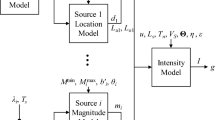Abstract.
Traditional reliability analysis has been augmented with geometrical strength analysis using strain techniques, resulting in the conception of an extension to reliability theory called robustness analysis. To reflect contemporary statistical terminology, robustness is taken to mean insensitivity to gross errors or blunders in the data. Robustness analysis is a natural merger of reliability and strain and is defined as the ability to resist deformations induced by the smallest detectable blunders as determined from internal reliability analysis. The geometrical strength analysis technique is used in order to provide a more complete and detailed description of the potential network deformation in terms of three independent measures representing robustness in scale, orientation, and configuration. These measures are also invariant with respect to “datum” shifts and orientation, and practically invariant to changes in scale. Initial experiences with robustness analysis have shown that it is a very powerful technique capable of providing a detailed point-by-point assessment of the strength of a network.
Similar content being viewed by others
Author information
Authors and Affiliations
Additional information
Received: 22 February 2000 / Accepted: 10 November 2000
Rights and permissions
About this article
Cite this article
Vaníček, P., Craymer, M. & Krakiwsky, E. Robustness analysis of geodetic horizontal networks. Journal of Geodesy 75, 199–209 (2001). https://doi.org/10.1007/s001900100162
Issue Date:
DOI: https://doi.org/10.1007/s001900100162




